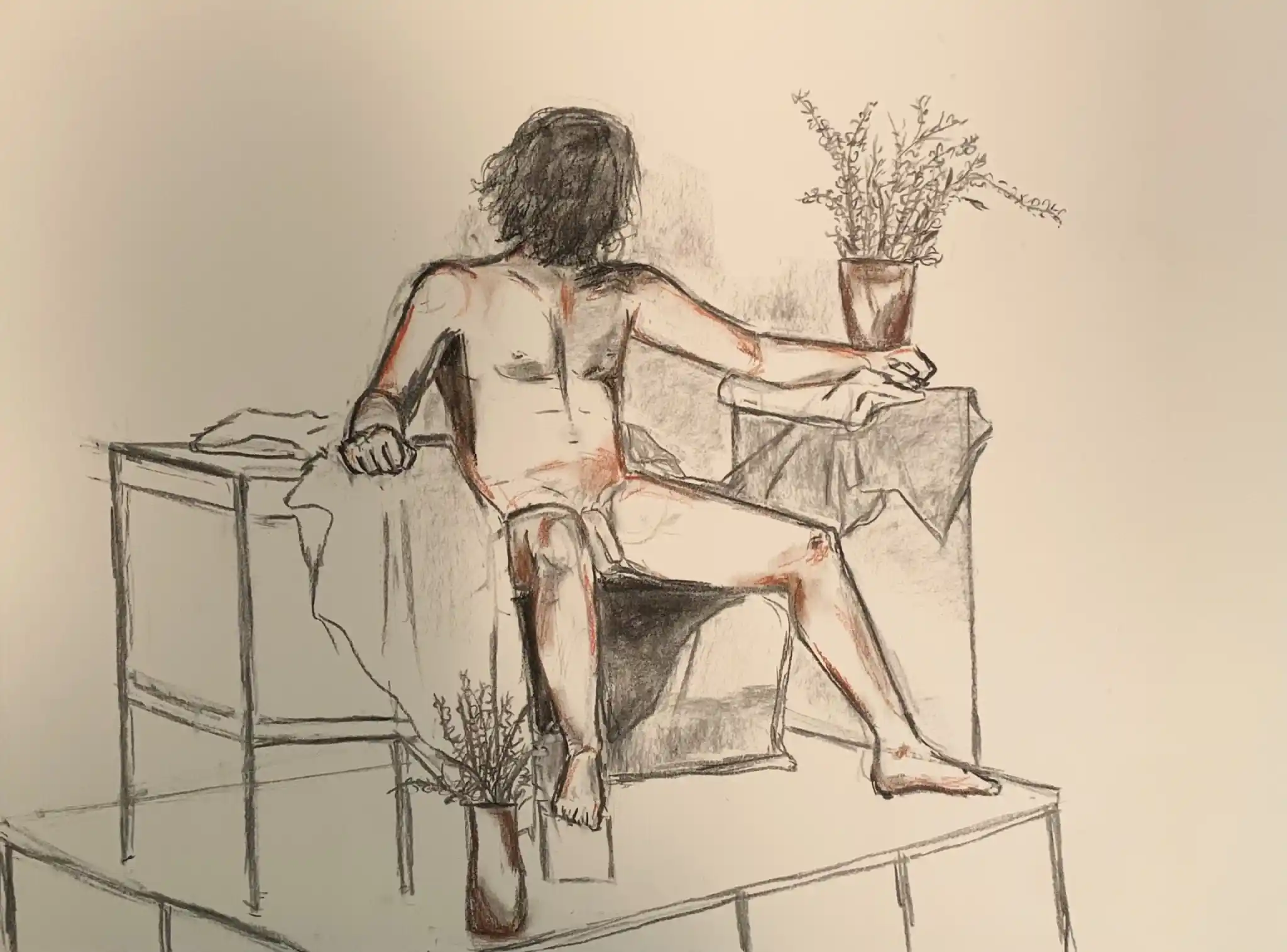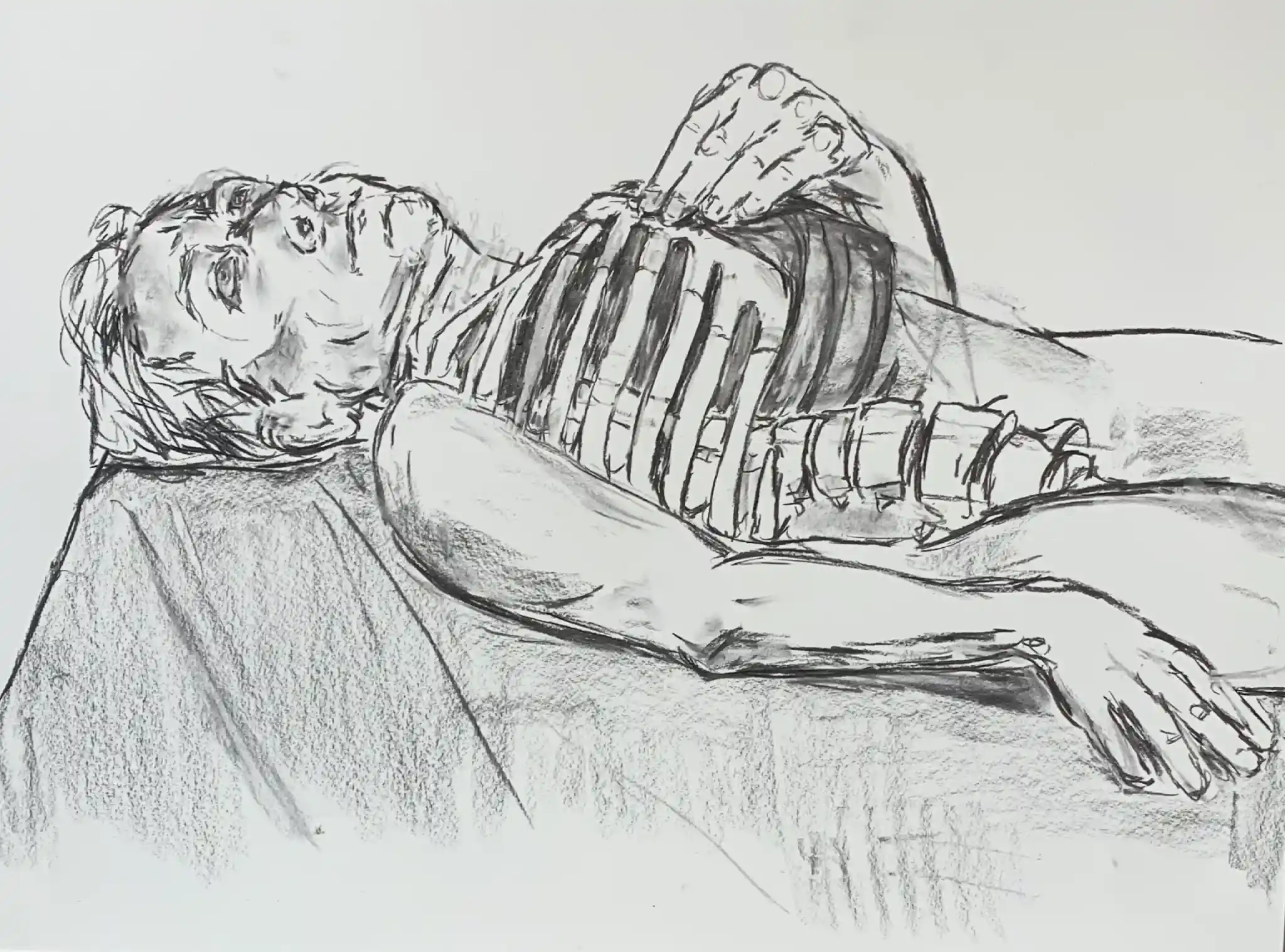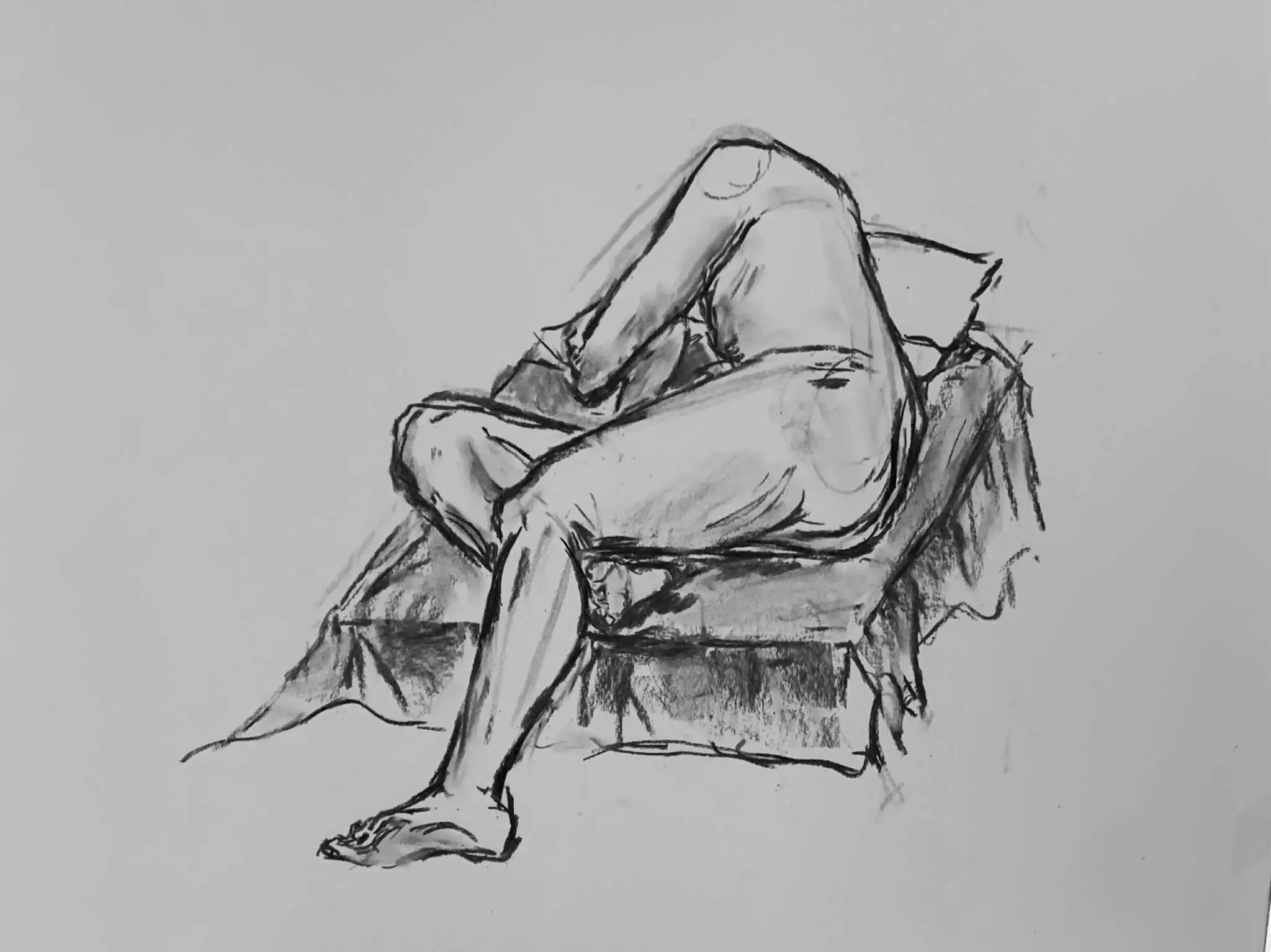The Bare Truth About Figure Drawing
Anyone who knows anything about studio arts in college is aware of a certain aspect of the classes that you won’t find in any other major – figure drawing. So what’s it like at Arcadia?
Figure drawing is a staple in Arcadia drawing courses and is even incorporated into Drawing I and II as its own unit. Understanding proportions, angles, and mass are all essential to making fine art, and having a model in front of you to reference is one of the best ways to learn. While the intro drawing classes only teach figure drawing for a few weeks of the semester, there is an entire class dedicated to figure drawing, where we build on our skills and continue to learn how to portray gesture, tone, anatomy, and portraiture.
Our figure drawing class is taught at night, but even though it’s on the late side, the professor, Krista Profitt, never lets there be a dull moment. Many of the students know each other from previous classes, and being able to see everyone’s different styles and take on the subject matter is one of my favorite parts.
Of course, it’s hard not to mention the elephant in the room – you’re in the company of a nude model twice a week for three hours. Understandably, my friends outside of the art department have a hard time wrapping their heads around that.
As artists, it’s our responsibility to have respect for the models and acknowledge the body for purposes of understanding the human figure. When I first started figure drawings, it was a shock to be in that environment, but the more I started drawing, the more it became like any other observational drawing or painting that I had done years past.
As odd as it may sound, one of the most interesting things I have discovered in figure drawing is how important it is to start with a stick figure, or so it seems. I was first taught to draw people from life by finding the vertical axis and which angle the body is leaning, and then adding lines across the connecting points where the head, shoulders, hips, and knees would be. It’s tempting to draw the outlines of the person first, but oftentimes it’s easy to get the proportions wrong if you’re not familiar with the body. Starting with the internal frame of the body ensures that whether the person you are drawing is young or old, tall or short, muscular or frail, you can still create an anatomically correct drawing, even if you don’t capture their exact likeness.
Figure drawing is also an interesting class because oftentimes you see the same models, whether they be someone from the area or a fellow student, and you can build connections with them. One of the most fascinating things you can find out about a model is why they’re doing it. For some I have known, especially students, they heard about the job through friends and they took the opportunity because they’re comfortable with their bodies and it’s a quick way to make money. For others, it can be a hobby of sorts.
Being able to house an environment where both the model and students are comfortable and feel safe is something that makes figure drawing so special. Though it is a challenging world to enter, it’s also a place where you can grow as an artist.





